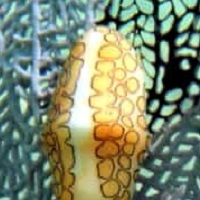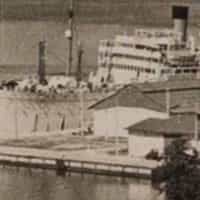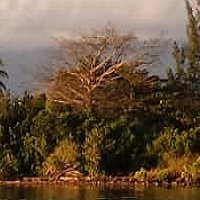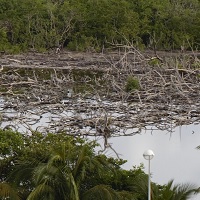Physical properties of epilithic river biofilm as a new lead to perform pollution bioassessments in overseas territories
Dominique Monti, Cedric Hubas, Xavier Lourenço, Farid Begarin, Alexandre Haouisée, Laurence Romana, Estelle Lefrançois, Alexandra Jestin, Hélène Budzinski, NathalieTapie, Théo Risser, Jean‑Louis Mansot, Philippe Keith, Olivier Gros,
Scientific Reports, 2020, 10 (1).
Chlordecone (CLD) levels measured in the rivers of the French West Indies were among the highest values detected worldwide in freshwater ecosystems, and its contamination is recognised as a severe health, environmental, agricultural, economic, and social issue. In these tropical volcanic islands, rivers show strong originalities as simplifed food webs, or numerous amphidromous migrating species, making the bioindication of contaminations a difcult issue. The objective of this study was to search for biological responses to CLD pollution in a spatially fxed and long-lasting component of the rivers in the West Indies: the epilithic bioflm. Physical properties were investigated through complementary analyses: friction, viscosity as well as surface adhesion were analyzed and coupled with measures of bioflm carbon content and exopolymeric substance (EPS) production. Our results have pointed out a mesoscale chemical and physical reactivity of the bioflm that can be correlated with CLD contamination. We were able to demonstrate that epilithic bioflm physical properties can efectively be used to infer freshwater environmental quality of French Antilles rivers. The friction coefcient is reactive to contamination and well correlated to carbon content and EPS production. Monitoring bioflm physical properties could ofer many advantages to potential users in terms of efectiveness and ease of use, rather than more complex or time-consuming analyses.
Lien vers le text intégral: https://www.nature.com/articles/s41598-020-73948-7.pdf








